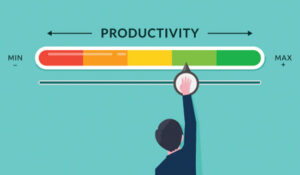As the saying goes, “if you can’t measure it you can’t improve it”, and one of the biggest challenges a contact centre faces is the ability to measure agent productivity.
Why? Because there are so many different parameters to take into consideration when calculating an agent’s productivity that you are relying on consolidating stats and data from a number of different systems and sources to provide a single view of productivity.
One Size Doesn’t Fit All – and That’s OK
The other point to note is that different contact centres may use different stats to measure agent productivity, so there is no one-size-fits–all approach which can be applied.
The key is to focus not just on the measurements you can track most easily but on ensuring your metrics are valuable, provide insight and fit in with your organisation’s strategic goals.
Having said that, there are probably some common areas which can be agreed on using service, quality and efficiency measures as a starting point.
The Stats You Use to Measure Agent Productivity and Why They’re a Problem
In terms of service you might look at areas such as abandoned call rate and average speed of answer, information which you may get from the telephony switch or call-logging system you have in place.
For quality you may focus on phone etiquette and product knowledge, relying on scores you may capture during agent evaluations in your quality monitoring system. When it comes to efficiency, you may focus on measures like customer on-hold times and agent occupancy, requiring calculations using stats from your ACD to work out total handle time divided by total available time.
Regardless of the areas you agree to track to calculate agent productivity, if you are calculating this all manually using information gathered from multiple data sources, it can get pretty confusing and labour intensive, with a chance of errors slipping in along the way that may potentially skew the data.
Taking the Problem and Making It Go Away
If this all sounds rather familiar, the good news is that there are others out there who have managed to simplify this task by implementing performance dashboard technology to automate a lot of the laborious manual processes.
This technology gathers the data you need instantly from a variety of sources, including ACDs, switches, WFM systems, CRM systems and more, to create real-time charts and performance dashboards, enabling key stakeholders to make the decisions they need to make more quickly and efficiently than ever before.
Not only that, it effectively provides ‘one version of the truth’ by eliminating the potential for misinterpretation of stats, and it can be used to support or refute what are very often just ‘anecdotal’ insights.
Placing Your Finger on the Pulse of What’s Really Happening as It Happens
Gone are the days of having a single resource spending countless hours collating data which becomes outdated as soon as it is published.
Instead, some contact centres have data streaming in a dashboard tailored specifically to what they want to see. It constantly updates as new stats are captured in real time, giving you a real finger on the pulse of what is happening in your contact centre with your agents at that point in time.
The importance of agent productivity cannot be overestimated because it is a true measure of how much value your agents bring to the organisation.
Author: Robyn Coppell
Published On: 2nd Mar 2018 - Last modified: 19th Jul 2022
Read more about - Guest Blogs, Business Systems, Productivity





































